Optimization of Accelerator Mixing Ratio for EPDM Rubber Grommet to Improve Mountability Using Mixture Design
Abstract
1. Introduction
2. Experimental Procedures
2.1. Test Specimen Preparation
2.2. Test Method for Mechanical Property Analysis
2.3. Test Method for Analysis of Vulcanization Characteristics
3. Experimental Analysis
3.1. Mixture Design
3.2. Analysis of Characteristics
3.3. Mixing Ratio Optimization Setup
3.4. Grommet Making and Testing
4. Analysis of Grommet Mountability
Result Analysis
5. Conclusions
Author Contributions
Funding
Conflicts of Interest
References
- Maria Daniela, S.; Anton, A.; Elena, M.; Gabriela, C.; Nicusor, F.; Cristian, V.; Daniela, P.; Florica, D. Effects of electsron beam irradiation on the mechanical, thermal, and surface properties of some EPDM/butyl rubber composites. Polymers 2018, 10, 1206. [Google Scholar] [CrossRef]
- Lev, Y.; Faye, A.; Volokh, K.Y. Experimental study of the effect of temperature on strength and extensibility of rubberlike materials. Exp. Mech. 2018, 58, 847–858. [Google Scholar] [CrossRef]
- Diana, P.; Aurelian, Z.; Catalin, A.; Florin, B.; Rodica, M. FDM process parameters influence over the mechanical properties of polymer specimens: A review. Polym. Test 2018, 69, 157–166. [Google Scholar] [CrossRef]
- Šarac, T.; Quiévy, N.; Gusarov, Q.; Konstantinovic, M.J. Influence of γ-irradiation and temperature on the mechanical properties of EPDM cable insulation. Radiat. Phys. Chem. 2016, 125, 151–155. [Google Scholar] [CrossRef]
- Kim, S.M.; Kim, K.J. Thiazole Type Accelerator effects on silane/silica filled natural rubber compound upon vulcanization and mechanical properties. Polym. Korea 2012, 36, 235–244. [Google Scholar] [CrossRef][Green Version]
- Lee, S.-B.; Yeom, S.-H.; Han, C.-Y.; Woo, C.-S. A study on finite element analysis and aging test for automotive grommet. Elastomers Compos. 2012, 47, 201–209. [Google Scholar] [CrossRef]
- Tjong, S.C.; Ke, Y.C. Fracture toughening behavior of elastomer modified polyphenylene ether/polyamide blends. Eur. Polym. J. 1998, 34, 1565–1750. [Google Scholar] [CrossRef]
- Zhao, Y.; Liu, Z.; Su, B.; Chen, F.; Fu, Q.; Ning, N.; Tian, M. Property enhancement of PP-EPDM thermoplastic vulcanizates via shear-induced break-up of nano-rubber aggregates and molecular orientation of the matrix. Polymer 2015, 63, 170–178. [Google Scholar] [CrossRef]
- Kim, Y.; Hwang, E.; Jeon, E. Optimization of Shape Design of Grommet through Analysis of Physical Properties of EPDM Materials. Appl. Sci. 2019, 9, 133. [Google Scholar] [CrossRef]
- Han, C.-Y.; Lee, S.-B. A Study on the Behavior for Automotive Grommet by Using FEA. Trans. Korean Soc. Automot. Eng. 2010, 18, 74–79. [Google Scholar]
- Kim, S.-M.; Kim, K.-J. Effects of Accelerators on the Vulcanization Properties of Silica vs. Carbon Black Filled Natural Rubber Compound. Polymer (Korea) 2013, 37, 269–275. [Google Scholar] [CrossRef][Green Version]
- Nabil, H.; Hanafi, I. Improving the tensile properties of natural rubber compounds containing ground ethylene propylene diene rubber waste by twostage processing. Procedia Chem. 2016, 19, 810–815. [Google Scholar] [CrossRef]
- Sae-oui, P.; Sirisinha, C.; Thepsuwan, U.; Thapthong, P. Influence of accelerator type on properties of NR/EPDM blends. Polym. Test 2017, 26, 1062–1067. [Google Scholar] [CrossRef]
- Phadke, A.; Bhattacharya, A.; Chakraborty, S.; De, S. Studies of vulcanization of reclaimed rubber. Rubber Chem. Technol. 1983, 56, 726–736. [Google Scholar] [CrossRef]
- Felipe, N.L.; Cléverson, F.S.G.; Maria, F.; De, S.; Regina Célia Reis, N. Mechanical and rheological properties of nitrile rubber/fluoromica composites. Appl. Clay Sci. 2018, 162, 165–174. [Google Scholar] [CrossRef]
- Alexandrescu, L.; SÖnmez, M.; Georgescu, M.; NiŢuicĂ, M.; Ficai, A.; Trusca, R.; GurĂu, D. Polymer nanocomposites PE/PE-g-MA/EPDM/nanoZnO and TiO2 dynamically crosslinked with sulphur and accelerators. Procedia Struct. Integr. 2017, 5, 667–674. [Google Scholar] [CrossRef]
- Costa, H.M.D.; Ramos, V.D.; Silva, W.S.D.; Sirqueira, A.S. Analysis and optimization of polypropylene (PP)/ethylene–propylene–diene monomer (EPDM)/scrap rubber tire (SRT) mixtures using RSM methodology. Polym. Test. 2010, 29, 572–578. [Google Scholar] [CrossRef]
- Dengwu, J.; Caijun, S.; Qiang, Y.; Xiaopeng, A.; Yu, L. Mixture design of concrete using simplex centroid design method. Cem. Concr. Compos. 2018, 89, 76–88. [Google Scholar] [CrossRef]
- Gorman, J.W.; Hinman, J.E. Simplex Lattice Designs for Multicomponent Systems. J. Technometrics 1962, 4, 463–487. [Google Scholar] [CrossRef]
- Ding, J.D.; Yan, P.Y.; Liu, S.L.; Zhu, J.Q. Extreme vertices design of concrete with combined mineral admixtures. Cem. Concr. Res. 1999, 29, 957–960. [Google Scholar] [CrossRef]
- ISO 2393:2014. Rubber Test Mixes—Preparation, Mixing and Vulcanization—Equipment and Procedures; International Organization for Standardization: Geneva, Switzerland, 2014. [Google Scholar]
- KS M 6518:2016. Physical Test Methods for Vulcanized Rubber; Korean Industrial Standards: Seoul, Korea, 2016. [Google Scholar]
- KS M 6687:2016. Test Method for Rubber Compound—Vulcanizing Characteristics Using Oscillating Disk Cure Meter; Korean Industrial Standards: Seoul, Korea, 2016. [Google Scholar]
- Damir, G.; Davorin, K. Optimization of hybrid manufacturing for surface quality, material consumption and productivity improvement. Strojniški Vestnik-J. Mech. Eng. 2017, 63, 567–576. [Google Scholar] [CrossRef]
- Irfan, S.; Dan, Z. Optimization of the brake factor for an S-Cam foundation brake using RSM. Strojniški vestnik-J. Mech. Eng. 2016, 62, 503–510. [Google Scholar] [CrossRef]
- Sajjad, D.; Hamid, R.P.; Oveis, B. An extreme vertices mixture design approach tothe optimization of methylal production process using p-toluenesulfonic acid as catalyst. Chem. Eng. Res. Des. 2016, 112, 155–162. [Google Scholar] [CrossRef]
- Maamoun, A.; Xue, Y.; Elbestawi, M.; Veldhuis, S. Effect of selective laser melting process parameters on the quality of Al alloy parts: Powder characterization, density, surface roughness, and dimensional accuracy. Materials 2018, 11, 2343. [Google Scholar] [CrossRef] [PubMed]
- Worrapon, W.; Chayathach, P.; Thongchai, K.; Surapol, N. An Extreme vertices mixture design approach to optimization of tyrosinase inhibition effects. Eng. J. 2017, 22, 175–185. [Google Scholar] [CrossRef]
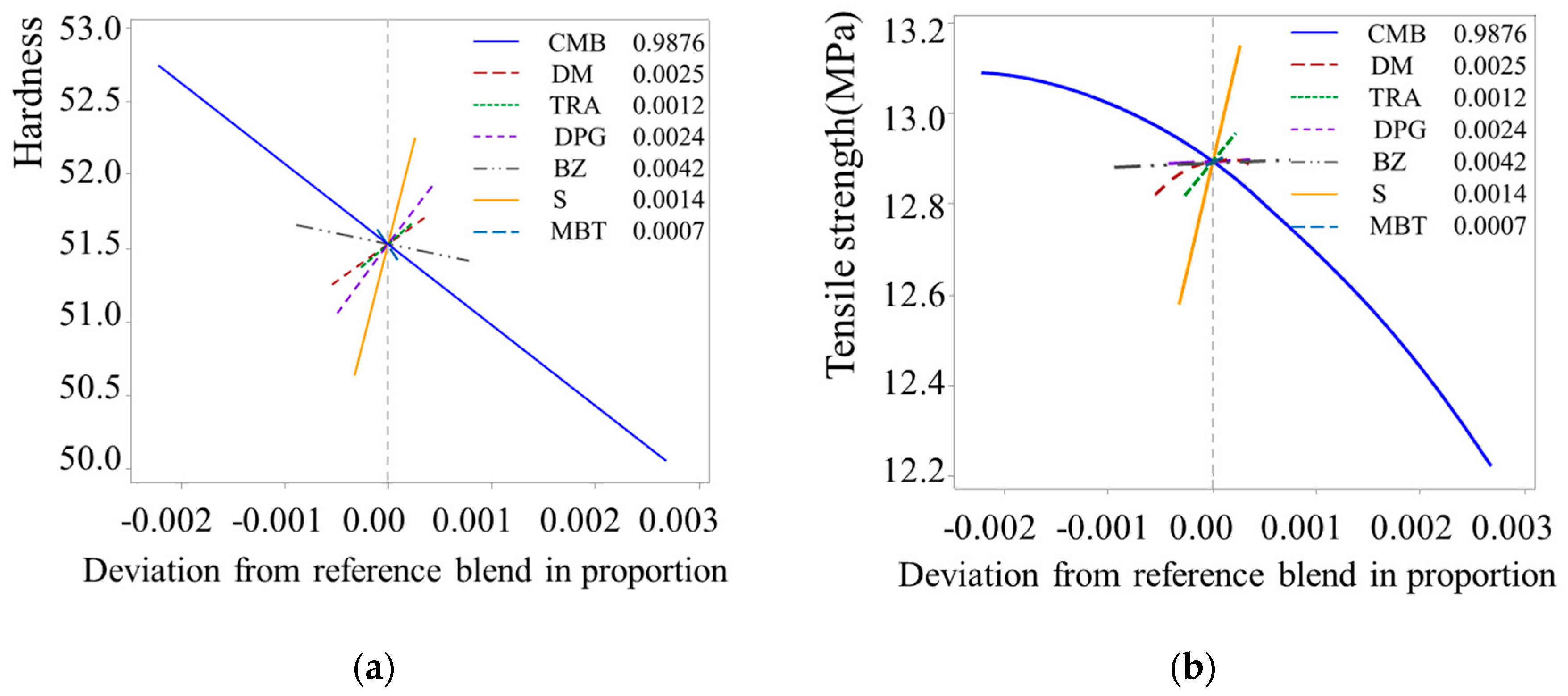
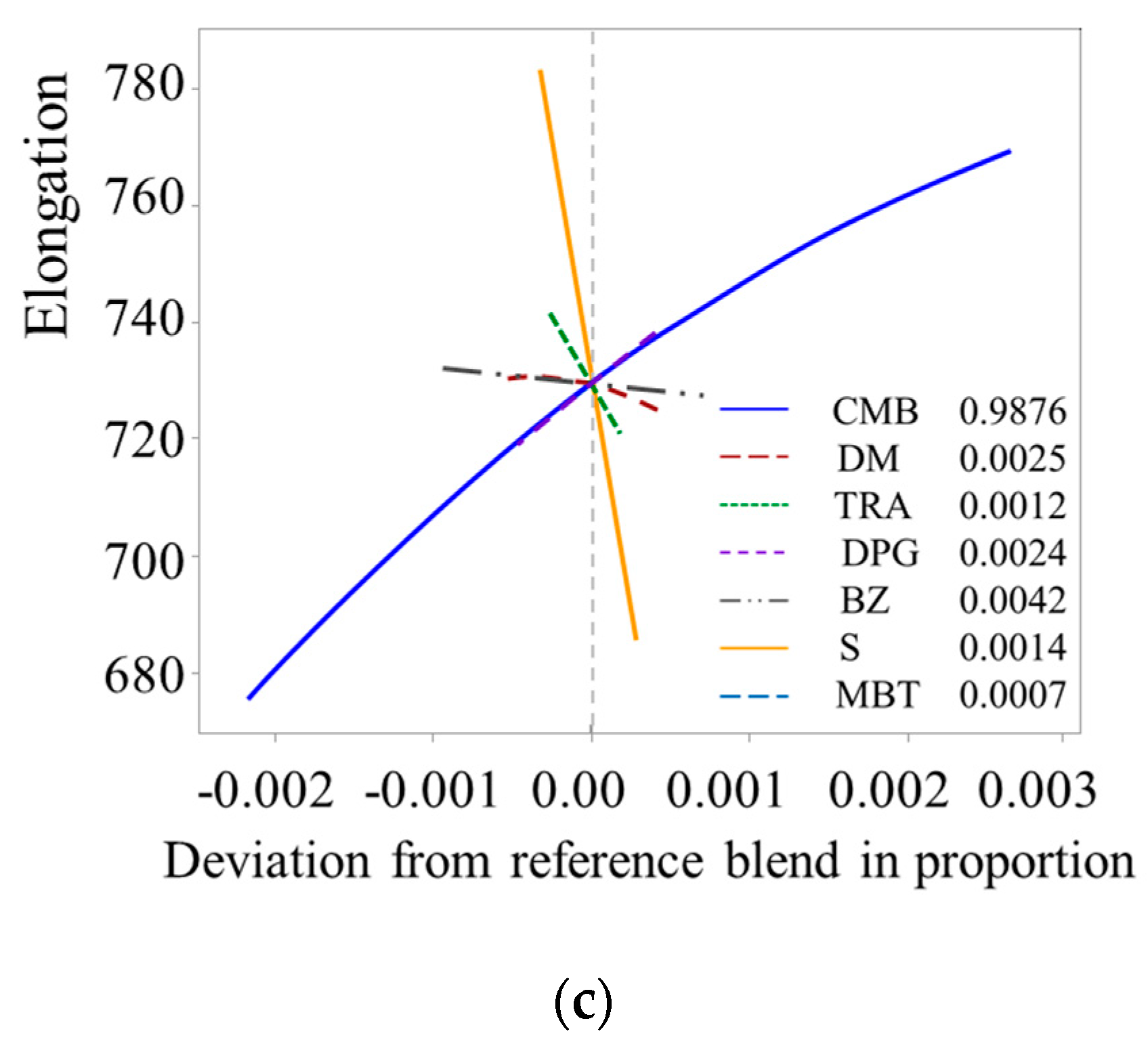

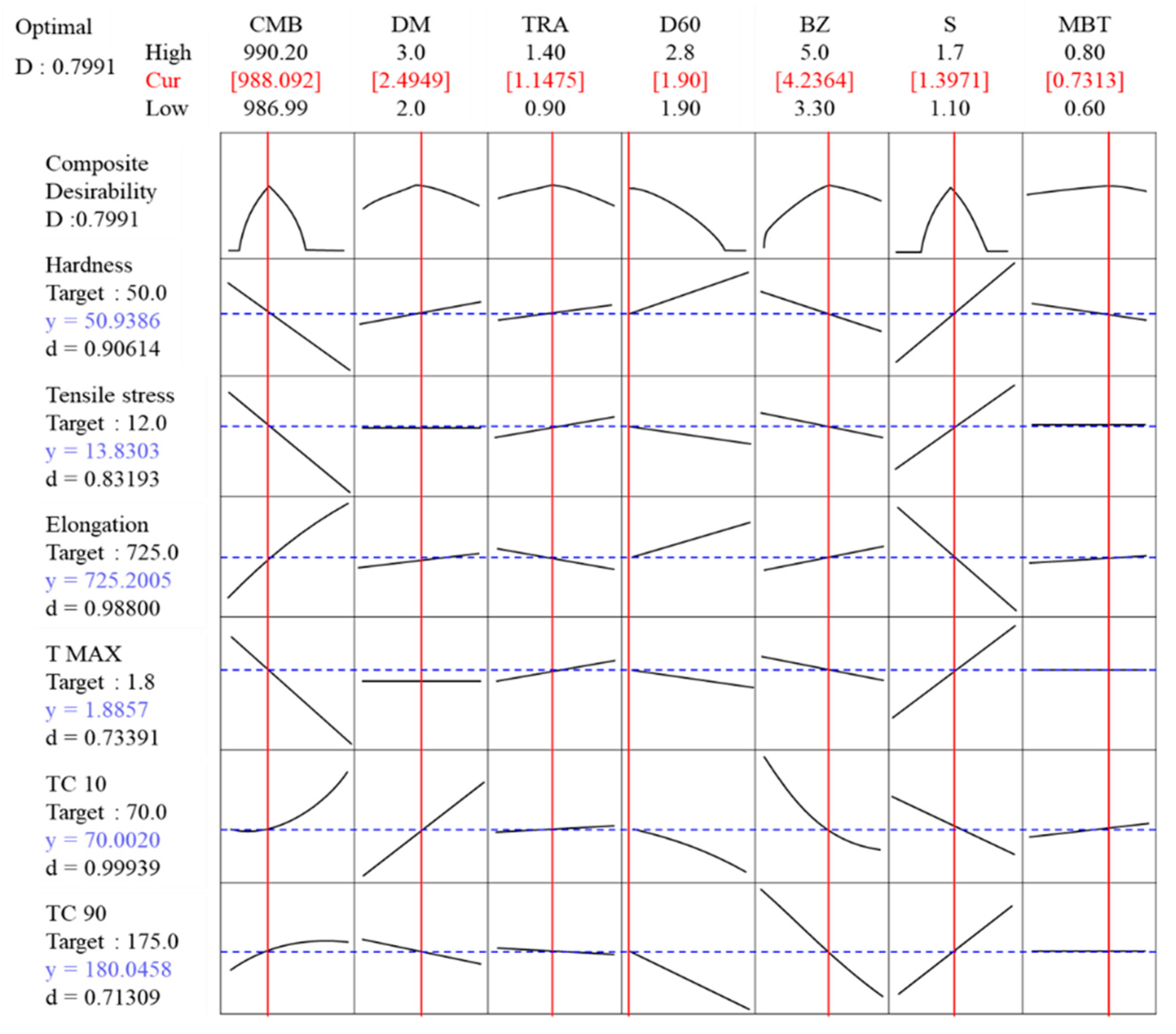
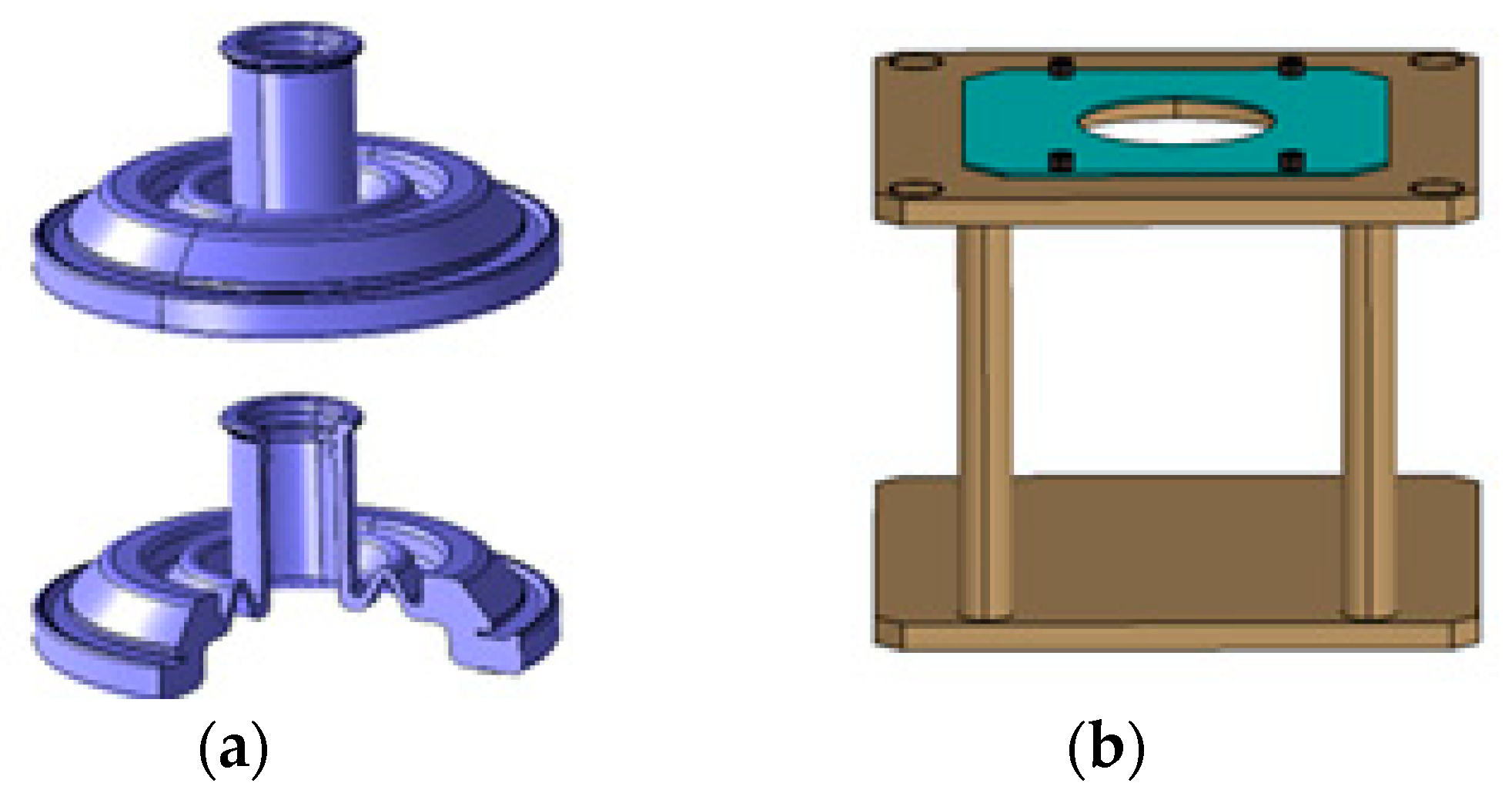
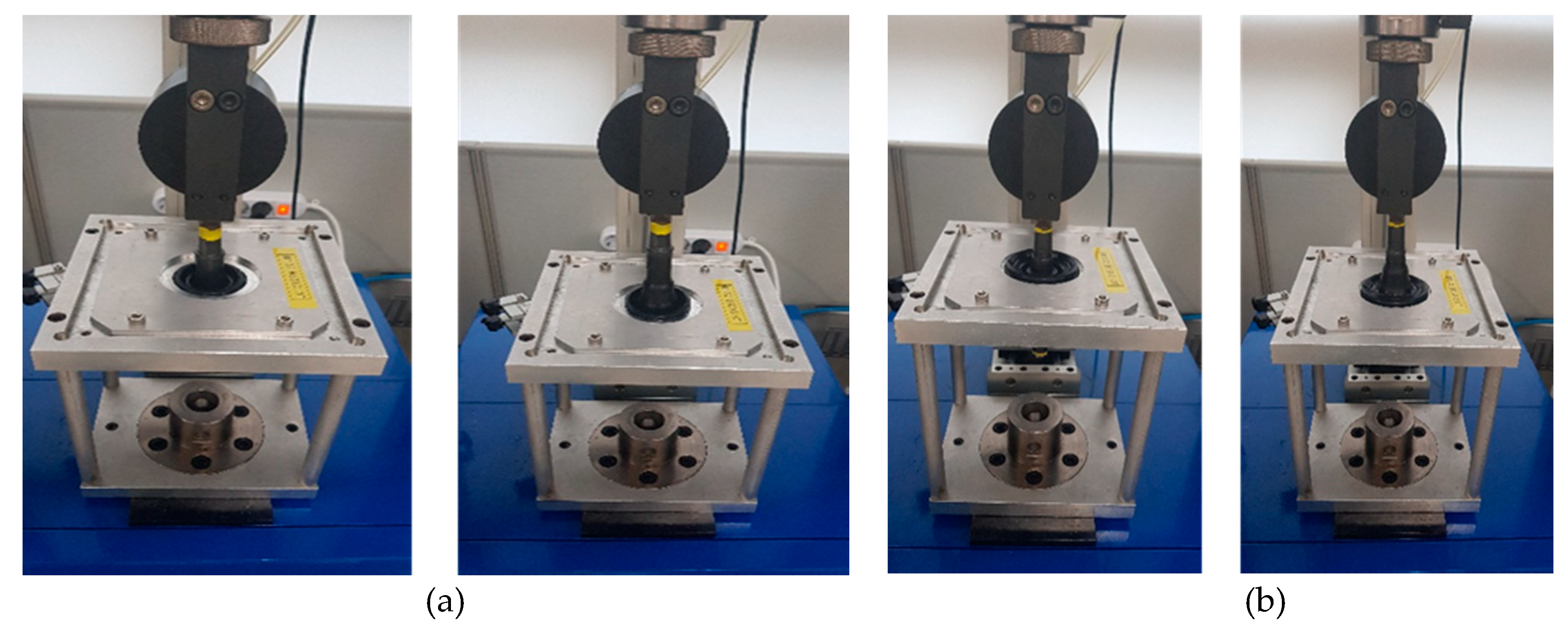

| Division | Unit | Lower limit | 1 | 2 | 3 | 4 | 5 | Upper limit |
|---|---|---|---|---|---|---|---|---|
| DM | g | 2.02 | 2.03 | 2.25 | 2.26 | 2.49 | 2.76 | 3.03 |
| TRA | g | 0.90 | 0.91 | 1.00 | 1.01 | 1.11 | 1.23 | 1.35 |
| DPG | g | 1.86 | 1.87 | 2.08 | 2.08 | 2.30 | 2.58 | 2.80 |
| BZ | g | 3.32 | 3.33 | 3.71 | 3.71 | 4.09 | 4.54 | 4.98 |
| MBT | g | 0.55 | 0.56 | 0.62 | 0.62 | 0.68 | 0.76 | 0.83 |
| S | g | 1.12 | 1.13 | 1.25 | 1.26 | 1.38 | 1.53 | 1.68 |
| CMB | g | 990.22 | 985.33 | |||||
| Total | g | 1000.00 | 1000.00 |
| Division | Lower | Target | Upper | Weight | |
|---|---|---|---|---|---|
| Mechanical characteristics | Hardness (Shore A) | 40 | 50 | 60 | 2 |
| Tensile strength (MPa) | 11 | 12 | 13 | 1.5 | |
| Elongation (%) | 700 | 725 | 750 | 2.5 | |
| Vulcanization characteristics | T MAX (Nm) | 1.35 | 1.80 | 2.26 | 1.5 |
| TC 10 (s) | 65 | 70 | 75 | 1.5 | |
| TC 90 (s) | 150 | 175 | 200 | 1.5 | |
| No. | Mechanical Characteristics | Vulcanization Characteristics | ||||
|---|---|---|---|---|---|---|
| Hardness (Shore A) | Tensile Strength (MPa) | Elongation (%) | T MAX (Nm) | TC10 (s) | TC90 (s) | |
| 1 | 51 | 13.03 | 745 | 1.89 | 76 | 196 |
| 2 | 51 | 11.95 | 738.1 | 1.85 | 76 | 189 |
| 3 | 52 | 11.81 | 750.5 | 1.88 | 77 | 195 |
| 4 | 51 | 13.02 | 727.4 | 1.92 | 76 | 200 |
| Average | 51.25 | 12.45 | 740.25 | 1.88 | 76.25 | 195 |
| Similarity | 2.5% | 2.3% | 2.1% | 0.3% | 8.9% | 8.3% |
© 2019 by the authors. Licensee MDPI, Basel, Switzerland. This article is an open access article distributed under the terms and conditions of the Creative Commons Attribution (CC BY) license (http://creativecommons.org/licenses/by/4.0/).
Share and Cite
Kim, Y.S.; Kim, Y.T.; Jeon, E.S. Optimization of Accelerator Mixing Ratio for EPDM Rubber Grommet to Improve Mountability Using Mixture Design. Appl. Sci. 2019, 9, 2640. https://doi.org/10.3390/app9132640
Kim YS, Kim YT, Jeon ES. Optimization of Accelerator Mixing Ratio for EPDM Rubber Grommet to Improve Mountability Using Mixture Design. Applied Sciences. 2019; 9(13):2640. https://doi.org/10.3390/app9132640
Chicago/Turabian StyleKim, Young Shin, Yong Tae Kim, and Euy Sik Jeon. 2019. "Optimization of Accelerator Mixing Ratio for EPDM Rubber Grommet to Improve Mountability Using Mixture Design" Applied Sciences 9, no. 13: 2640. https://doi.org/10.3390/app9132640
APA StyleKim, Y. S., Kim, Y. T., & Jeon, E. S. (2019). Optimization of Accelerator Mixing Ratio for EPDM Rubber Grommet to Improve Mountability Using Mixture Design. Applied Sciences, 9(13), 2640. https://doi.org/10.3390/app9132640





